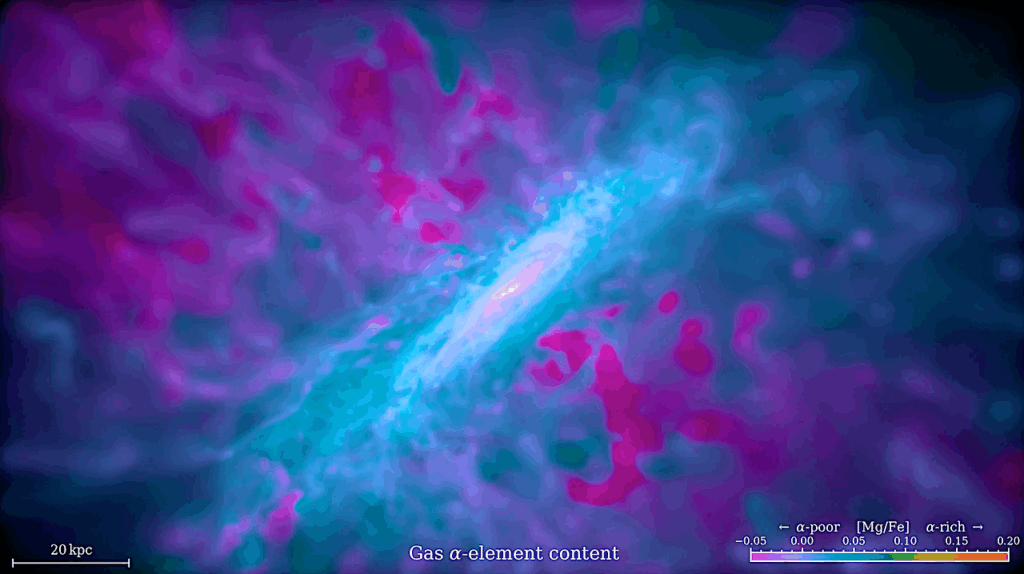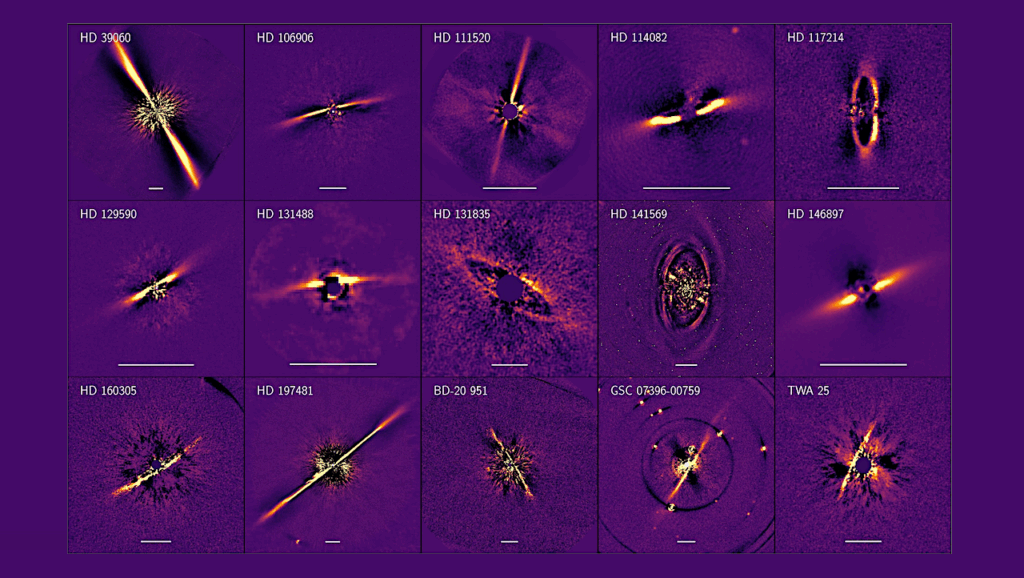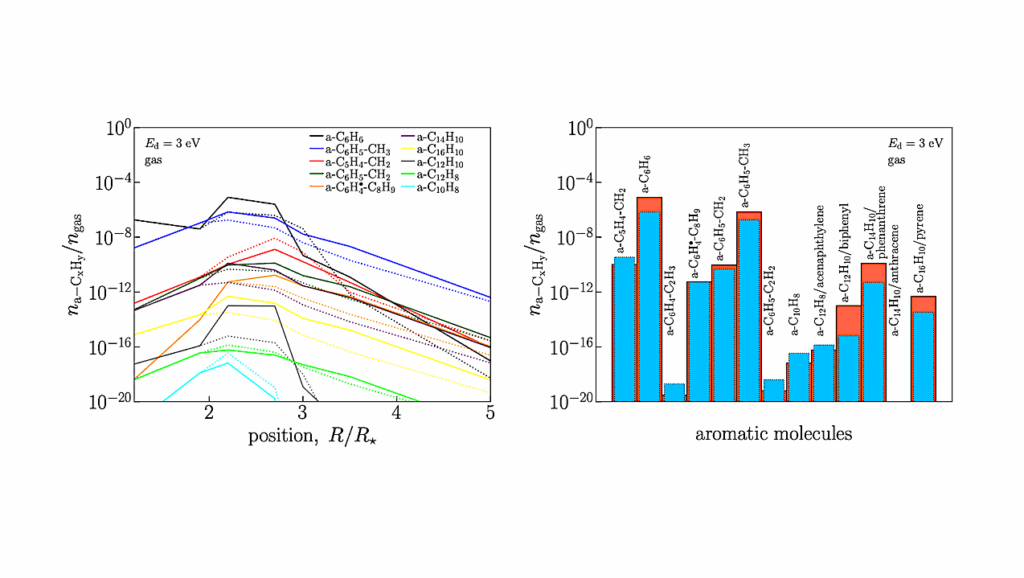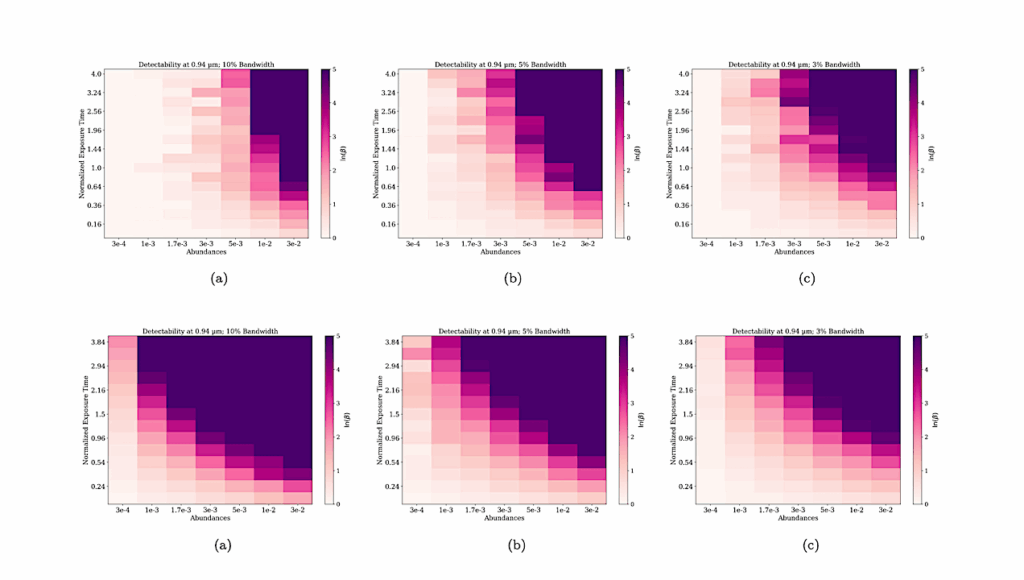Was Earth’s Water Acquired Locally During The Earliest Phases Of The Solar System Formation?
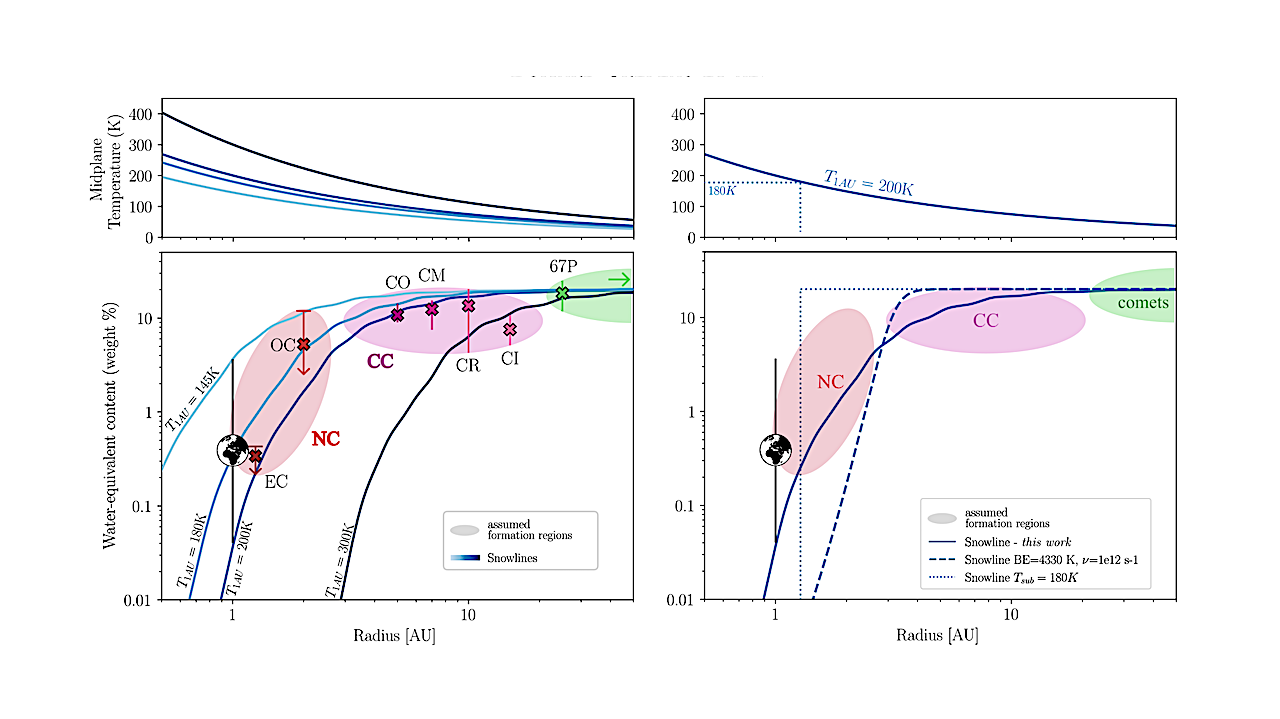
The origin of the terrestrial water remains debated, as standard Solar System formation models suggest that Earth formed from dry grains, inside the snowline of the Proto-Solar Nebula (PSN).
Here, we revisit this issue through the lens of computational chemistry. While the classically used snowline relies on a single condensation temperature, recent work in quantum chemistry shows that the binding energy of water on icy grains has a gaussian distribution, which implies a gradual sublimation of water rather than a sharp transition. We use the computed distribution of binding energies to estimate the radial distribution of adsorbed ice on the dust grains across the PSN protoplanetary disk.
Our model reproduces the full range of estimated water abundances on Earth and matches the hydration trends observed in chondrite groups at their predicted formation distances. Thus, we suggest that a significant fraction of Earth’s water may have been acquired locally at early stages of the Solar System formation, without requiring delivery from beyond the classical snowline.
Lise Boitard-Crépeau, Cecilia Ceccarelli, Pierre Beck, Lionel Vacher, Piero Ugliengo
Comments: 7 pages, 2 figures, published in ApJL
Subjects: Earth and Planetary Astrophysics (astro-ph.EP)
Cite as: arXiv:2507.03968 [astro-ph.EP] (or arXiv:2507.03968v1 [astro-ph.EP] for this version)
https://doi.org/10.48550/arXiv.2507.03968
Focus to learn more
Journal reference: ApJL 987 (2025) L25
Related DOI:
https://doi.org/10.3847/2041-8213/ade5aa
Focus to learn more
Submission history
From: Lise Boitard-Crépeau
[v1] Sat, 5 Jul 2025 09:17:34 UTC (740 KB)
https://arxiv.org/abs/2507.03968
Astrobiology,


